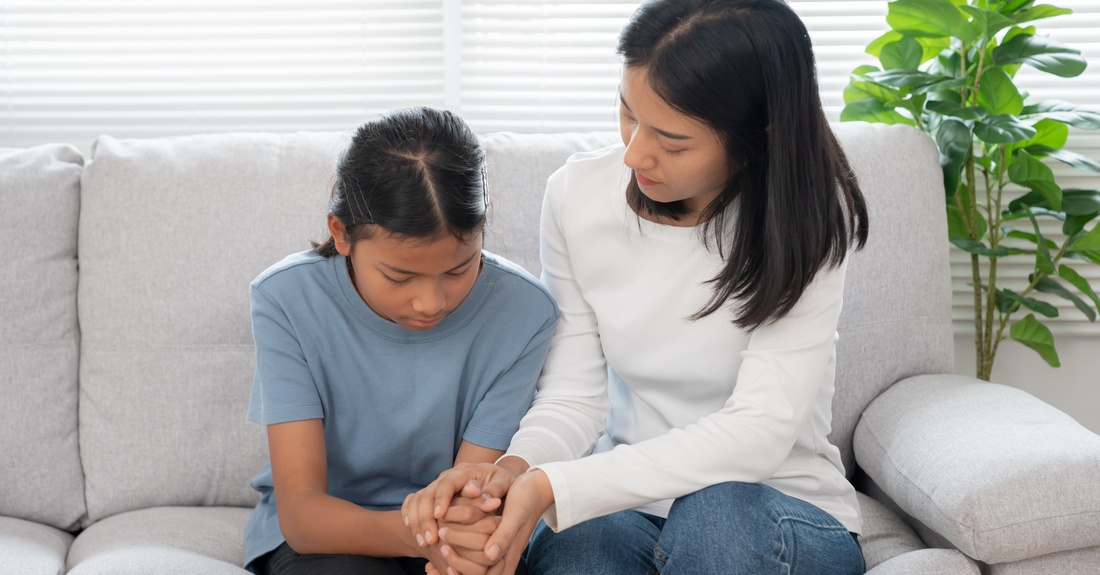
No mental health struggle is so hard or challenging that symptoms cannot be improved through mental health supports. There is always hope, and there are always mental health resources that can improve an individual’s quality of life.
Mental health struggles among America’s youth are not uncommon. One crucial statistic to know about kids’ mental health is that about 20%, or 1 in 5, youth in America are living with a mental health condition, according to CDC data.
The child mental disorders list encompasses mental health struggles that can affect youth for a short period of time and mental health conditions that a child or individual may experience for the majority of their life.
Just as every individual grows into their own shape and size physically, kids and teens have mental health journeys that are unique to their perspectives, backgrounds, environments and needs. This also means that how a mental health struggle affects one child may impact another differently, making it difficult to answer the question about the hardest mental illness to live with.
The best way to answer that question is to say the severity at which a mental health condition influences a child’s or teen’s quality of life and ability to perform daily tasks determines how hard it is to live with a particular mental illness. However, some mental health conditions are prone to more severe symptoms, which can make life more difficult for those with one.
So what is the hardest mental illness to live with?
While this question is challenging to answer without making too broad of a generalization for all the reasons described above, borderline personality disorder (BPD) is often described as the hardest mental illness to live with by those who suffer from it and by mental health professionals.
Why is living with borderline personality disorder (BPD) so hard?
BPD is a mental health disorder that impacts how individuals feel about themselves and those around them. It’s characterized by unstable, intense emotions and extreme, impulsive behaviors that typically make it difficult to function in everyday life.
These intense and unstable emotions often equate to a pattern of relationships and activities that can be described in the same way. Individuals who live with BPD have heightened fears of abandonment that leads to mood swings and anger and can even cause them to self-sabotage happy and loving friendships and relationships.
Experts estimate that BPD affects about 3% of America’s youth, and the struggles are most heightened during adolescence.
What is the hardest mental illness to treat?
Some mental health struggles — such as anxiety, depression, obsessive compulsive disorder, BPD and others — are more likely to affect individuals throughout their life. Sometimes symptoms lessen for a period, but the best strategy for living with these conditions is learning to manage triggers and come up with treatment plans and coping mechanisms.
BPD, as one of the most difficult mental illnesses to live with, can also be one of the hardest to treat. This is often because many of the symptoms of BPD waylay treatment and distance the person suffering from those who may try to support them.
For example:
- To avoid abandonment or feelings of loneliness, an individual may dive into relationships and/or end relationships suddenly. They may also have intense or unstable relationships with family or friends, making it difficult to have a support system around them.
- Intense feelings may cause impulsive or dangerous behaviors, like substance use to escape tough emotions, binge eating and self-harming.
- Intense feelings may also lead to changing and angry moods that can make it difficult to focus on coping mechanisms.
However, many people find that complex mental health issues can be improved through treatment, even BPD. Talk therapy, medication and substance use treatment are all great options for those experiencing BPD. Family and friends can also benefit from therapy to help them understand and support the needs of an individual suffering from BPD.
If a child or teen is experiencing BPD, early intervention is ideal.
Anxiety is another mental health struggle that can be one of the hardest to live with because individuals can have numerous triggers and ultimately must learn to cope with symptoms.

Is anxiety a severe mental illness?
Signs and symptoms of severe and complex mental health problems are often precursors to a diagnosis of a mental health disorder that needs to be managed for years to come. Anxiety is one most common of kids’ mental health disorders, with 9.4% of American kids and teens living with an anxiety disorder. However, the severity of the condition is measured by how much it affects a child’s or adolescent’s daily life.
Symptoms of anxiety in kids:
- Headaches and stomachaches
- Avoiding typical activities, interests or people
- Frequent tantrums and meltdowns, especially at transition times, like day care or school drop-off, naptime, or bedtime
- Changes in appetite, activity level and sleep habits
- Seeking a lot of reassurance from adults
- Constant worrying or overplanning
- Bed-wetting
It can be one of the hardest mental disorders to live with since anxiety disorders are marked by excessive worry about perceived outcomes that may seem unlikely or not bothersome to those without an anxiety disorder but are still very real to those experiencing this mental health struggle.
It can be difficult for kids and teens — who are still learning about emotions and about themselves — to recognize anxiety symptoms and triggers because those who experience a severe case of anxiety often have multiple triggers. Parents and caregivers also may not realize or inadvertently downplay symptoms.
If you suspect a child or teen in your life is experiencing a mental health struggle, don’t let them suffer alone. Reach out to Heart of Iowa Community Services at HICSIowa.org.
